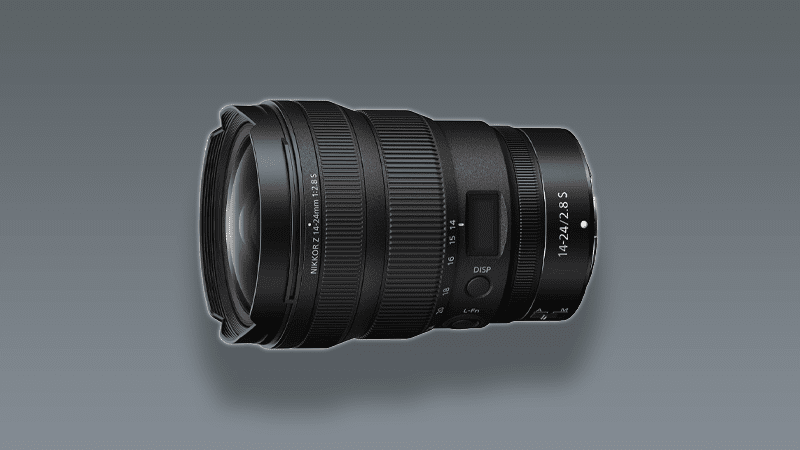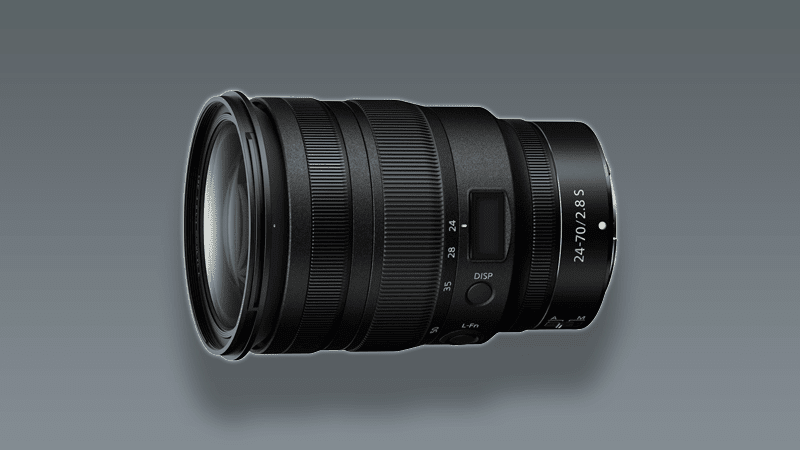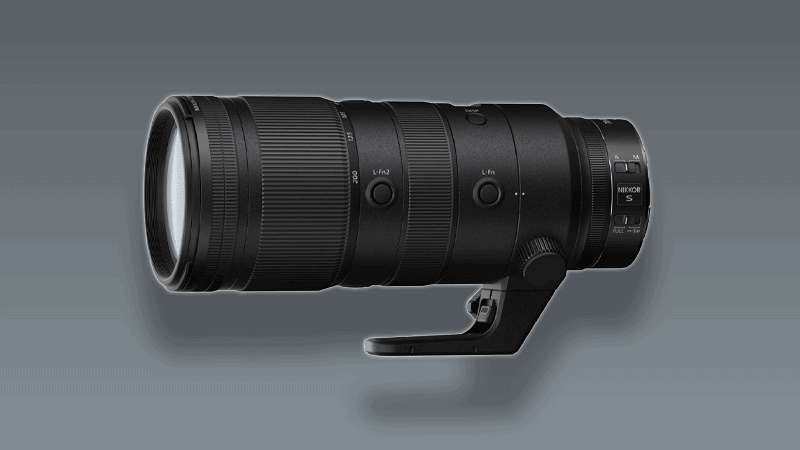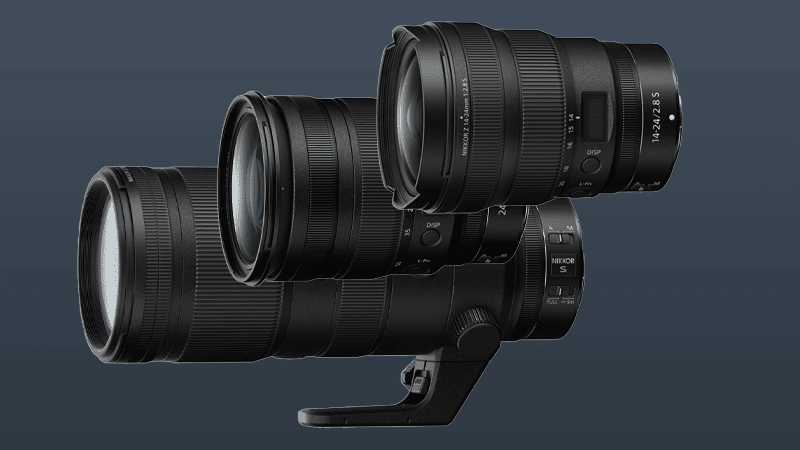In photography, there are three lenses that every photographer considers to be the Nikon Z Trinity Lenses.
Likely the most commonly used of the Nikon z trinity lenses are the NIKKOR Nikon Z 24-70mm f/2.8 S lens, but the other two are must-haves for a complete photography kit.
Here’s why these three lenses are considered the Nikon z Holy Trinity.
What are the Nikon Z Holy Trinity Lenses?
A great place to start with photography is asking what are the Nikon Z Holy Trinity lenses.
The holy trinity of lenses represents the three professional zoom lenses that cover wide-angle, normal, and telephoto focal lengths. There is some debate about which lenses make up the trinity for each camera brand, but these are the three most recognized.
Typically, the trinity only refers to the most cutting-edge line of lenses a brand has available. We’ll be focussing on the trinity for Nikon Z-mount lenses, but you can also find the same Holy Trinity of Nikon fx lenses or crop sensor lenses.
You could also argue for the Nikon Holy Trinity prime lenses being included in this list, but that will always leave coverage gaps in your focal length selection. That’s why we’re sticking with zoom lenses for this trinity.
Nikon Z 14-24mm f/2.8 S

The NIKKOR Holy Trinity for Landscape Photography
Bottom Line:
The Nikon Z 14-24mm f/2.8 S is Nikon’s best wide-angle zoom lens. This is the go-to choice for landscape photographers, interior photographers, and anyone looking to add a wide-angle capability to their lens kit.
Pros
- Four ED and Three Aspherical Elements
- Accepts Rear Gels
- Multiple Coatings
- Weather Sealed
- 9-Bladed Diaphragm
- Pro-level Lens
Cons
- No telephoto range
Why We Picked It
We’re starting out this review of the Nikon trinity of lenses by talking about the best wide-angle lens you can get for a Nikon Z-mount camera.
If you’re looking to get into wide-angle photography, this is perhaps the single best lens that you can start with. It’s got multiple optical elements that will help you to reduce any distortion that you can pick up when trying to shoot difficult landscapes or even architectural photography.
This lens also has a few unique features which are great for pros. It accepts rear gels which means you won’t have to mess with the front of the camera if you’re looking to add some in-frame effects.
This lens is also weather-sealed which is exactly what you’d expect from a professional-level lens. This means that you can take it outdoors even in rough weather without worrying too much about your lens getting water damaged.
This Nikon Z trinity lens is also protected by multiple coatings including a fluorine coating which helps the glass to stay durable. The other coatings will help reduce distortions in your images.
This lens tops off at 24 mm which is great because that allows you to explore some interesting street photography and even take some unique portraits. It’s a little unconventional, but this lens is more than just a one-trick pony.
Who It’s For
This lens is the exact right choice for anyone who’s looking to get into landscape photography. You need that wide-angle to capture the sweeping breath of a landscape in a single image.
You can also zoom between ultra-wide to the upper end of the wide-angle range. This lets you get creative with your framing and stay in control of your shots.
This lens is also great for professional photographers. It’s more than capable of doing paid work as well as artistic shooting.
The 24 mm top end of this lens is also a great choice for people who want a little bit of extra freedom. It’s definitely not a conventional choice for street photography or portraits, but it could allow you to take some unique pictures that other photographers just aren’t doing.
Nikon Z 24-70mm f/2.8 S

The Most Versatile of the Nikon Z Trinity Lenses
Bottom Line:
There’s almost nothing that the Nikon Z 24 mm to 70 mm lens can’t accomplish. This lens lets you do everything from landscape to portrait. If you’re looking for a single lens to get started or to launch a professional career, this is the right choice for most photographers.
Pros
- Programmable Control Ring
- Information OLED Panel and L.Fn Button
- Weather Sealed
- ARNEO and Nano Crystal Coatings
- Two ED and Four Aspherical Elements
- Bright f/2.8 Aperture
Cons
- A great general lens, but lacks real telephoto or wide-angle ability
Why We Picked It
Every list of Nikon Z Trinity Lenses always takes us back to the Nikon Z 24-70mm f/2.8 S. This just might be the best lens for anyone shooting on a Nikon camera.
There’s almost something magical about the Nikon 24 mm to 70 mm lens. This lens unlocks almost every style of photography allowing you to drop down to the 24 mm end for landscapes and the 70 mm end for light telephoto work and portraits.
This is also one of the highest-end lenses made by Nikon. It’s got cutting-edge features like an OLED information panel which lets you get a quick glance at your lens settings without having to mess with the camera menu.
It’s also got a programmable control ring and a programmable button which allow you to change its features on the fly.
As you might expect, this lens is weather-sealed which is a hallmark for durability and a mandatory feature in any lens that’s going to make a Holy Trinity list.
Who It’s For
This lens is for almost everyone. It’s great for street photography, landscapes, events, weddings, and even some basic telephoto photography like wildlife and sports.
The flexibility of this lens also makes it a great choice for beginner photographers as well as working professionals who need an all-purpose lens. We know plenty of professional wedding photographers who only take a 24 mm to 70 mm lens with them to the wedding that they are shooting.
While you should always carry a backup lens, this is a great choice for people looking to get their first professional-level lens.
Unless you know you’re going to need to go wider than 24 mm or tighter than 70 mm, this is a great lens to have. The only things that it doesn’t excel at are a few specialized styles of photography that require more extreme focal lengths.
Beginners are going to especially love this lens because of its flexibility. It’s perfect for taking with you on a vacation where you can capture everything from breathtaking city skylines to portraits of your friends and family as you travel.
Nikon Z 70-200mm f/2.8 S

The Telephoto Zoom Lens of the Holy Trinity of Nikon lenses
Bottom Line:
The Nikon Z 70-200mm f/2.8 S is the single best choice if you know that your photography style is going to involve a lot of telephoto work. This lens makes portraits, wildlife, and sports photography easy.
Pros
- Multi-Focus Stepping Motor AF System
- Weather-sealed
- ED, SR, and Fluorite Optical Elements
- Programmable Control Ring and L.Fn Button
Cons
- No wide-angle potential
Why We Picked It
We picked the Nikon Z 70-200mm f/2.8 S to round out the trinity of Nikon lenses because it’s really the best option for photographers who want to do more telephoto work, but who don’t want to get an ultra-specialized lens like a 600 mm prime lens.
This lens produces stunning portraits. Zoom lenses have been catching up rapidly to the quality that you get out of prime lenses and the Nikon Z 70-200mm f/2.8 S is a clear example of how far they’ve come.
The unique multi-focus system in this lens allows you to keep track of your subjects even under demanding situations like sports where they’re always moving.
It’s no surprise that this lens is also weather sealed. It’s incredibly important that telephoto lenses are weather sealed and able to withstand moisture and dust as they are often taken outside and on vacation. It’s great to have this lens in your photography bag if you’re traveling the world, and you’re looking to get great pictures even when you’re stuck out in the elements.
This lens is also packed with optical elements and several different coatings. This adds to its durability while reducing the visual distortions that can show up and lenses that don’t have these protective features.
You’ve also got all the high-tech features you ever need from a zoom lens. A programmable control ring and programmable button can be set to whatever you need them for. It’s also got an OLED information panel which lets you see your settings with a quick glance.
The focal length of this lens might be the tightest of our three options, but don’t let that scare you away from considering this as an everyday lens. Using a telephoto lens for everyday shooting puts you in an interesting artistic position and can definitely be used to change how you look at the world.
Who It’s For
This telephoto pick for Nikon’s holy grail lenses is for photographers who want to really get the most out of their telephoto shooting.
This lens is an incredibly versatile choice for a telephoto zoom lens. While 70 mm is definitely not tight enough for shooting in cramped situations or some street photography, it’s definitely flexible enough to allow you to take this lens to events and weddings.
There are plenty of professional photographers out there who rely on this and the 24mm to 70mm lens for their events. These two mounts combined will let you tackle basically any photography situation that would ever come your way.
You can also zoom in to the top end of this lens and get started with sports photography or even wildlife. This lens excels at any photography style that necessarily makes you very far away from your subjects.
Don’t let the distance for you though, if you stick on the lower focal length lens of this lens, you can do some amazing portraits.
It’s this kind of flexibility that makes the Nikon Z 70-200mm f/2.8 S one of the Holy Trinity lenses for Nikon. The focal length combined with the features will let beginners and pros alike sink their teeth into some telephoto photography.
Nikon Holy Trinity Lenses FAQ
Now that you know which three lenses are the Nikon Holy Trinity lenses, here are a few more things you should know about Nikon glass.
Why Do People Love The Trinity?
Photographers love the Holy Trinity of lenses because they cover every focal length from ultra-wide to telephoto. These three lenses will shoot essentially every style of photography outside of the few very specialized styles.
What Three Lenses Should I Buy?
You should start with the 24mm to 70mm lens, but then you can pick based on whatever style of photography you want to explore. You can even try out the Nikon trinity prime lenses like the 35mm, 50mm, and 85mm prime lenses.
Remember that the right lens for you is going to be the one that helps you get better at photography and explore the styles of Photography that you like the most. The three lenses that you buy should be the Holy Trinity if you’re looking for the most possible coverage, but you could also get more specific lenses to meet your needs.
What Lenses are Compatible With Nikon z5?
The Nikon Z5 camera is one of Nikon’s new mirrorless cameras. This means that it uses Z-Mount lenses. Only Z-Mount lenses will Naturally fit the mounting system for the Nikon Z5. However, you can connect almost any type of lens to a Nikon camera if you get the right mount converter.
A mount converter connects between a lens and the body of the camera to convert one mounting system to another. For example, it can allow you to connect a Canon EF lens to a Nikon Z-mount camera.
See also the related Nikon Z6 Mirrorless Digital Camera Review
Should You Buy Full-Frame (FX), or Crop-Sensor (DX)?
It’s easy to understand the difference between full-frame and crop sensor cameras and lenses. Full-frame cameras and lenses are designed for professional photographers and experienced hobbyists looking to capture the most film-like pictures they can. A crop sensor is perfect for someone who is shopping on a budget or who just wants to try out photography before making the jump to professional-level gear.
How Many Lenses Should a Photographer Have?
Answering “How many lenses do you really need?” starts with figuring out what styles of photography you want to explore. If your laser-focused on one style, like portraits, you’ll only need a handful of lenses. If you want to explore a wide range of styles, you might wind up picking up more specialized lenses along the way.
You should have as many lenses as you need to take the kinds of pictures you like. However, our trinity of Nikon lenses makes a great place to start for any photographer.
What Type of Lenses Do I Need?
The type of Nikon lens that you need is going to be the one that helps you explore photography as an art form, hobby, or business. If you’re looking to get into photography for the first time, you want to pick a good everyday lens like the 24 mm to 70 mm lens.
That lens is also a great choice for working photographers who need an all-purpose lens. You can also grab a telephoto lens to give you more range or a wide-angle lens unless you catch more of a scene in your photographs.
How to Understand Nikon Lens Symbols
There are a lot of Nikon lens symbols to get used to especially if you are new to the brand. The good news is that most are shared between other brands with examples like AF standing for “autofocus.”
Learning how to understand Nikon lenses also means figuring out the different types of lenses Nikon offers. Z-mount lenses are for their mirrorless cameras while FX means full sensor and DX means crop sensor. The “S” on Nikon lenses lets you know that these are their highest-quality pro-level lenses.
How Does The Holy Trinity Help Photographers?
The Holy Trinity of Nikon Z lenses does something very important for photographers. It allows us to cover all of the most common focal lengths from ultra-wide to telephoto. This means that there’s no style of photography you won’t be able to shoot and you’ll always have the right angle for every shot and composition.
This also lets you develop a quick list of the first lenses you want to buy. All of these lenses are very general despite some broad specializations such as wide angle, normal, or telephoto. They’re a great initial investment for getting some much more specialized lenses like prime lenses and other options.
What Is Nikon Z Mount
Camera companies have recently started to release professional mirrorless cameras. These are broadly considered to be the successor to DSLR cameras and they’re a great choice for people looking to get into the deeper end of photography.
Camera companies needed to make a new mounting system for their mirrorless cameras. Older lenses are simply too large and lack a lot of the technological features that have gone into mirrorless cameras. Nikon might not be the biggest name in photography, but they certainly aren’t behind the competition.
When you see the letter Z on a Nikon product, that’s how you know it’s mirrorless. Nikon Z cameras are mirrorless and Nikon Z lenses are built for those mirrorless cameras. The Nikon Z Mount, of course, supports both these lenses and cameras.
What Is a Good Everyday Lens?
A good everyday lens is one that offers a lot of flexibility to handle a variety of photography styles. If you’re looking for a single lens to carry to cover everything from landscapes or portraits, we recommend the Nikon Z 24 mm to 70 mm lens. That’s a perfect everyday lens for most photographers.
However, you should consider a few other options when it comes to picking the right everyday lines for you. One of the biggest deciding factors is going to be the style of photography you like the most. If you’re really into landscapes in wide-angle shooting, you should consider the Nikon Z 14 mm to 24 mm lens.
The Nikon Z 70 mm to 200 mm lens is a strong choice for people who don’t need the wide and normal angle focal lengths. This could be the right call if your main photography is sports, wildlife, or other styles of photography that benefit from having more telephoto options.
At the end of the day, the right everyday lens for you is the one that’s going to inspire you to take more pictures and develop your skills as a photographer.
Wrapping Up the Nikon Z Holy Trinity
The Nikon Z trinity lets you unlock virtually every style of photography. No matter what you want to take pictures of, these three lenses will let you shoot like a pro.
The Nikon Z 24-70mm f/2.8 S is at the top of the Nikon Z Trinity Lenses—it’s the best for all-around photography. The Nikon Z 14-24mm f/2.8 S is for you if you like shooting wide-angle styles like landscape photography while the Nikon Z 70-200mm f/2.8 S is for you if you want to go a little tighter with portraits, sports, or wildlife photography.
What’s your pick order for the Nikon Holy Trinity of lenses? If you’re looking to find even more specialized lenses for your Nikon camera, check out our other articles on Nikon lenses!



